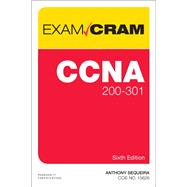- Understand networking fundamentals concepts, including network components, network topology architectures, physical interfaces and cabling types, TCP and UDP, wireless principals, switching concepts, and virtualization fundamentals
- Master IPv4 addressing and subnetting and configure IPv6
- Configure and verify VLANs, interswitch connectivity, and Layer 2 discovery protocols
- Describe Rapid PVST+ Spanning Tree Protocol
- Compare Cisco Wireless Architectures and AP Modes
- Enable security technologies including device access control, site-to-site and remote access VPNs, ACLs, Layer 2 security features, and wireless security protocols
- Configure and verify IPv4 and IPv6 static routing and single area OSPF
- Understand DHCP, DNS, and other networking services like SNMP, syslog, SSH, and TFTP/FTP
- Configure and verify inside source NAT and NTP
- Understand how automation affects network management, controller-based and software-defined architectures, and Cisco DNA Center-enabled device management
- Understand network programmability concepts, including characteristics of REST-based APIs (CRUD, HTTP verbs, and data encoding); configuration management mechanisms such as Puppet, Chef, and Ansible; and learn to Interpret JSON encoded data









